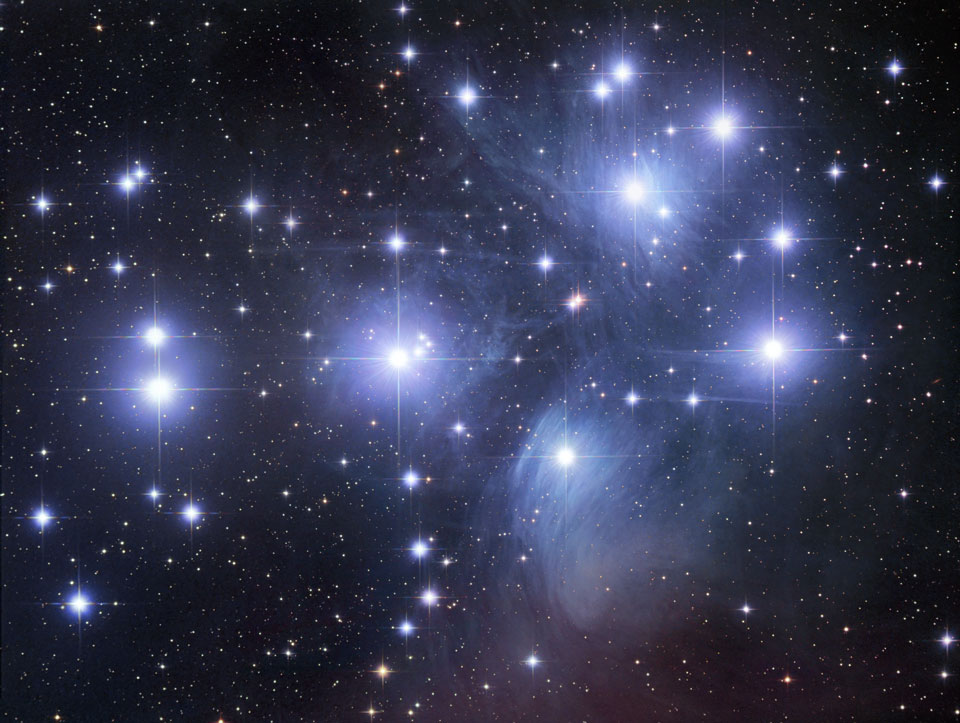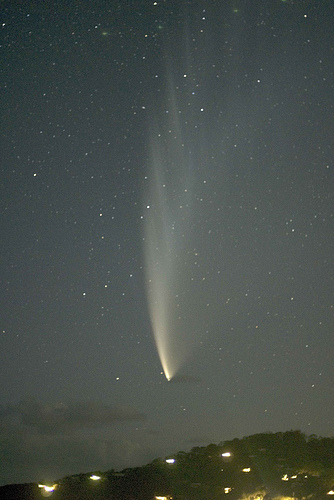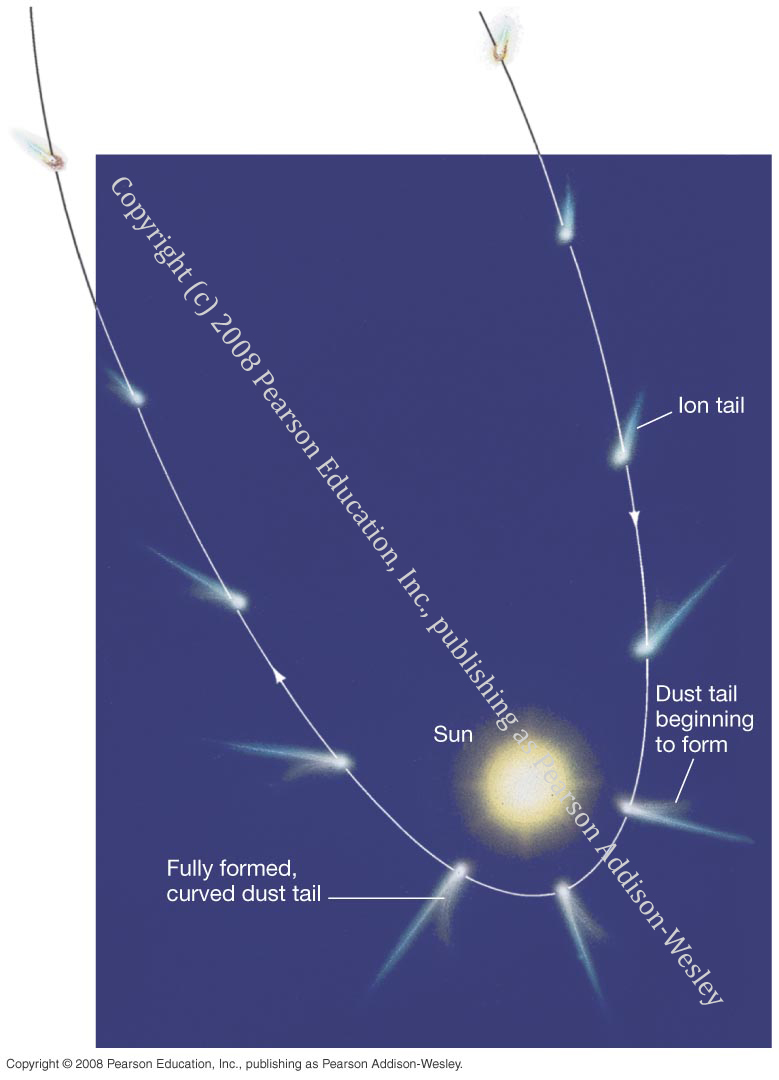When I worked as a Science Education Specialist in the Department of Physics & Astronomy at UBC with the Carl Wieman Science Education Initiative, I had the opportunity to create lab activities for the survey astronomy courses (aka “Astro 101”). These are courses aimed at students outside the Faculty of Science who need some science credits to graduate. One course was about the Solar System; the other is about stars and galaxies.
With the support of the CWSEI, I worked with some terrific course instructors to first write learning outcomes for each course. We then identified the outcomes that would be better supported by hands-on learning in the labs. For example, it’s well known students struggle to learn about the phases of the Moon by listening to the professor and looking at diagrams in a traditional lecture, whereas in a hands-on lab setting, students would be better able to
- use the geometry of the Earth, Moon, and Sun to illustrate the phases of the Moon and to predict rise/set times
- illustrate the geometry of the Sun, Earth, and Moon during lunar and solar eclipses and explain why there are not eclipses every month
I aimed to develop activities that gave students opportunities to practice thinking and acting in more expert-like ways, rather than replicating and confirming known results. So, some of these activities are a bit unusual, like figuring out the best night of the month to sneak across campus or spaghettifying a Playdoh astronaut as he falls into a blackhole.
Format and Files
All the activities have a similar format:
- The activities are designed to be completed in 50 minutes by 20-30 students in a basic lab environment (large tables to support teamwork and collaboration, some specialized equipment, space for students and TAs to circulate). They’re classified as “tutorials” because they’re only 50 minutes long, rather than 3-hour “labs”.
- Each activity has a brief intro that motivates the outcomes, one or more active, hands-on, discovery phase(s), and ends with a short assessment the students hand in on their way out the door.
- The activities are facilitated by 1 (or sometimes 2) trained and engaged Teaching Assistants and that required us to write guides for the TAs. It’s well known that “recipe” labs are less effective: students are able to follow a detailed set of instructions but often are unable to transfer what they verify to other contexts. We learned quickly that providing TAs with a recipe for running the activity (“1. Do A. 2. Get students to do B. 3. Do C….”) did not engage the TAs, gave them no opportunity to learn about teaching, and provided minimal professional development for those looking ahead to academic careers. So, I revised the TA Guides so they identify the required equipment and steps and also give recommended questions and scripts to drive the discussions and explanations for the pedagogical choices.
- The files linked here include PDFs of the materials handed out to students, the TA Guide, and a .zip file with LaTeX, .eps graphics, and any other supporting materials. The LaTeX files use several packages including pstricks. Overleaf has no problem compiling the files when you select xelatex instead of pdflatex.
Attribution
You’re welcome to copy, borrow, and adapt to fit your context and outcomes. If there’s an opportunity to add some attribution, you can write
Unless other wise noted, resources are shared under a Creative Commons Attribution 4.0 International (CC-BY) license by Peter Newbury peternewbury.org. This work is supported by the Carl Wieman Science Education Initiative at the University of British Columbia.
 When a meteorite hits the surface of a planet or moon, it creates an impact crater. This picture of our Moon’s Mare Nubium and surrounding hills shows some of the Moon’s surface is quite smooth while other regions are covered in craters.
By measuring the sizes and number of craters, astronomers can learn about the objects (called the “impactors”) that struck the surface and also about the ages of various regions on the planet’s surface.
When a meteorite hits the surface of a planet or moon, it creates an impact crater. This picture of our Moon’s Mare Nubium and surrounding hills shows some of the Moon’s surface is quite smooth while other regions are covered in craters.
By measuring the sizes and number of craters, astronomers can learn about the objects (called the “impactors”) that struck the surface and also about the ages of various regions on the planet’s surface.
- Craters activity (pdf)
- TA Guide (pdf)
- files (zip)
 An orrery is a mechanical model of the Solar System. When you turn a crank, the planets and moons orbit the Sun at correctly-scaled distances with correctly-scaled periods. In this tutorial, you and your classmates build a scale model of the Solar System by marking the locations of the visible planets, Mercury, Venus, Earth, Mars, Jupiter and Saturn, at regular intervals of time. Later, when you and your classmates step from location to location, you’ll reproduce the motion of the planets – a human orrery!
An orrery is a mechanical model of the Solar System. When you turn a crank, the planets and moons orbit the Sun at correctly-scaled distances with correctly-scaled periods. In this tutorial, you and your classmates build a scale model of the Solar System by marking the locations of the visible planets, Mercury, Venus, Earth, Mars, Jupiter and Saturn, at regular intervals of time. Later, when you and your classmates step from location to location, you’ll reproduce the motion of the planets – a human orrery!
 Every month, the Moon appears to change shape in the sky as it goes through phases from new Moon to full Moon and then back to new. Ancient civilizations used the phases of the Moon to track the passage of time. Today's Gregorian calendar no longer depends on the phases of the Moon but the Islamic, Hebrew and Chinese cultures still base festivals and holy days on the cycles of the Moon.
Every month, the Moon appears to change shape in the sky as it goes through phases from new Moon to full Moon and then back to new. Ancient civilizations used the phases of the Moon to track the passage of time. Today's Gregorian calendar no longer depends on the phases of the Moon but the Islamic, Hebrew and Chinese cultures still base festivals and holy days on the cycles of the Moon.
The more you understand the nature of the Moon's phases, the more you can appreciate how astronomy influences our culture and the better you'll be able to predict when important events like Ramadan, Hannukah, Easter and Lunar New Year will occur.
In this tutorial, you will explore the changing geometry of the Sun-Earth-Moon system that produces each phase of the Moon, and then the connection between the geometry and the time of day the Moon rises and sets.
Madden et al. (2020) use an adaptation of this activity in an interesting astronomy education research project that compares students' learning and experiences using VR, a desktop computer simulation, and this hands-on analog activity. The Sun, stars and planets cross our sky in complicated patterns that depend on the Earth’s daily rotation around its tilted axis and its annual revolution of the Earth around the Sun. For thousands of years, astronomers have watched the sky, figured out the patterns and built “computers” so they could predict when and where the Sun, stars and planets rise and set each day. In this tutorial, you’ll use your 21st Century computer to explore the motion of the Sun.
The Sun, stars and planets cross our sky in complicated patterns that depend on the Earth’s daily rotation around its tilted axis and its annual revolution of the Earth around the Sun. For thousands of years, astronomers have watched the sky, figured out the patterns and built “computers” so they could predict when and where the Sun, stars and planets rise and set each day. In this tutorial, you’ll use your 21st Century computer to explore the motion of the Sun.
Note: this activity was built using the NAAP Motions of the Sky Simulator which doesn't function any more. You can easily adapt the activity to a simulation that shows the path of the Sun across the sky.

- Extrasolar planets activity
- TA Guide
- files (including a PostScript file of data from the MOST telescope observations of HD 209458. We custom-printed this file to create a 20'-long poster we hung in the hallway outside the astronomy lab. Students lined up along the poster to make the required measurements.)
- Eliza Miller-Ricci et al (2008) "MOST Space-based Photometry of the Transiting Exoplanet System HD 209458: Transit Timing to Search for Additional Planets" ApJ 682 586


 In this activity, students investigate the quantities that determine the strength of the force of gravity between two objects, identifying what matters and how that quantity changes the force. So they can recognize and appreciate the inverse-square law of gravity, the students first play with an analogy: the amount of pain the cartoon character Fry feels when he looks are different sized light bulbs, from near and far and with open or squinting eyes. They do this through an “invention activity” (Schwartz and Martin, 2004) which are proven to increase students’ understanding of the new concept (gravity) and their ability to transfer that knowledge to other situations.
In this activity, students investigate the quantities that determine the strength of the force of gravity between two objects, identifying what matters and how that quantity changes the force. So they can recognize and appreciate the inverse-square law of gravity, the students first play with an analogy: the amount of pain the cartoon character Fry feels when he looks are different sized light bulbs, from near and far and with open or squinting eyes. They do this through an “invention activity” (Schwartz and Martin, 2004) which are proven to increase students’ understanding of the new concept (gravity) and their ability to transfer that knowledge to other situations.
 Look at the desk and look around the room. Seems pretty flat, doesn’t it? But the Earth isn’t flat, so why is the room? What about the Universe? Is it flat? Does it have positive curvature? Negative? How can we tell?
In this activity, you’ll do experiments that explore the effects of curvature. The key to determining the shape is the number of degrees in a triangle.
Look at the desk and look around the room. Seems pretty flat, doesn’t it? But the Earth isn’t flat, so why is the room? What about the Universe? Is it flat? Does it have positive curvature? Negative? How can we tell?
In this activity, you’ll do experiments that explore the effects of curvature. The key to determining the shape is the number of degrees in a triangle.
 White dwarfs and neutron stars are two bizarre forms of stellar corpses left behind after the star collapses. For a very massive star, though, nothing can stop its end-of-life collapse. The star becomes a black hole, one of the strangest and most extreme objects in the Universe. How extreme? Spacetime is so curved (or as Newton would say, “gravity is so strong”) not even light can escape once it falls into a black hole. What would happen to a star or a planet that gets too close to the black hole? In this tutorial, you’ll figure that out by watching a poor astronaut fall into the black hole of death!
White dwarfs and neutron stars are two bizarre forms of stellar corpses left behind after the star collapses. For a very massive star, though, nothing can stop its end-of-life collapse. The star becomes a black hole, one of the strangest and most extreme objects in the Universe. How extreme? Spacetime is so curved (or as Newton would say, “gravity is so strong”) not even light can escape once it falls into a black hole. What would happen to a star or a planet that gets too close to the black hole? In this tutorial, you’ll figure that out by watching a poor astronaut fall into the black hole of death!
 The colour of a glowing gas, like a candle flame, the burner on a gas stove, or a star reveals its temperature: hotter gases glow blue, colder gases glow red. On more careful inspection, though, the light we receive from each gas contains an enormous amount of information: not just its temperature but also its chemical composition, motion and more. This information is found by decoding the spectrum of the gas.
In this tutorial, you’ll learn how to “crack the code” and reveal what the glowing objects are made of.
The colour of a glowing gas, like a candle flame, the burner on a gas stove, or a star reveals its temperature: hotter gases glow blue, colder gases glow red. On more careful inspection, though, the light we receive from each gas contains an enormous amount of information: not just its temperature but also its chemical composition, motion and more. This information is found by decoding the spectrum of the gas.
In this tutorial, you’ll learn how to “crack the code” and reveal what the glowing objects are made of.
 Stars come in all colours and sizes, masses and brightnesses, ages, and distances. How can we possibly learn how stars work when each one appears to be unique? What we need are some relationships between the characteristics of stars. We already know that the colour of a star is directly related to the temperature of the star: red stars are cool, blue stars are hot. That means we don’t have to measure both colour and temperature – we get one from the other. Are there any other relationships? What does a “relationship” look like, anyway? And what does a relationship tell us about how stars work?
In this tutorial, you’ll see what it means for characteristics to be related (or not related) and then see how to use the relationships.
Stars come in all colours and sizes, masses and brightnesses, ages, and distances. How can we possibly learn how stars work when each one appears to be unique? What we need are some relationships between the characteristics of stars. We already know that the colour of a star is directly related to the temperature of the star: red stars are cool, blue stars are hot. That means we don’t have to measure both colour and temperature – we get one from the other. Are there any other relationships? What does a “relationship” look like, anyway? And what does a relationship tell us about how stars work?
In this tutorial, you’ll see what it means for characteristics to be related (or not related) and then see how to use the relationships.
- Properties of stars activity
- files
- The stars in the activity are 10 standard sample bottles with a paper insert and a labels 1 thru 10 on the lids


 Within 30 seconds of me saying, “Well?”, they’d taught each other that this was a sunset. It went something like this:
Within 30 seconds of me saying, “Well?”, they’d taught each other that this was a sunset. It went something like this:









